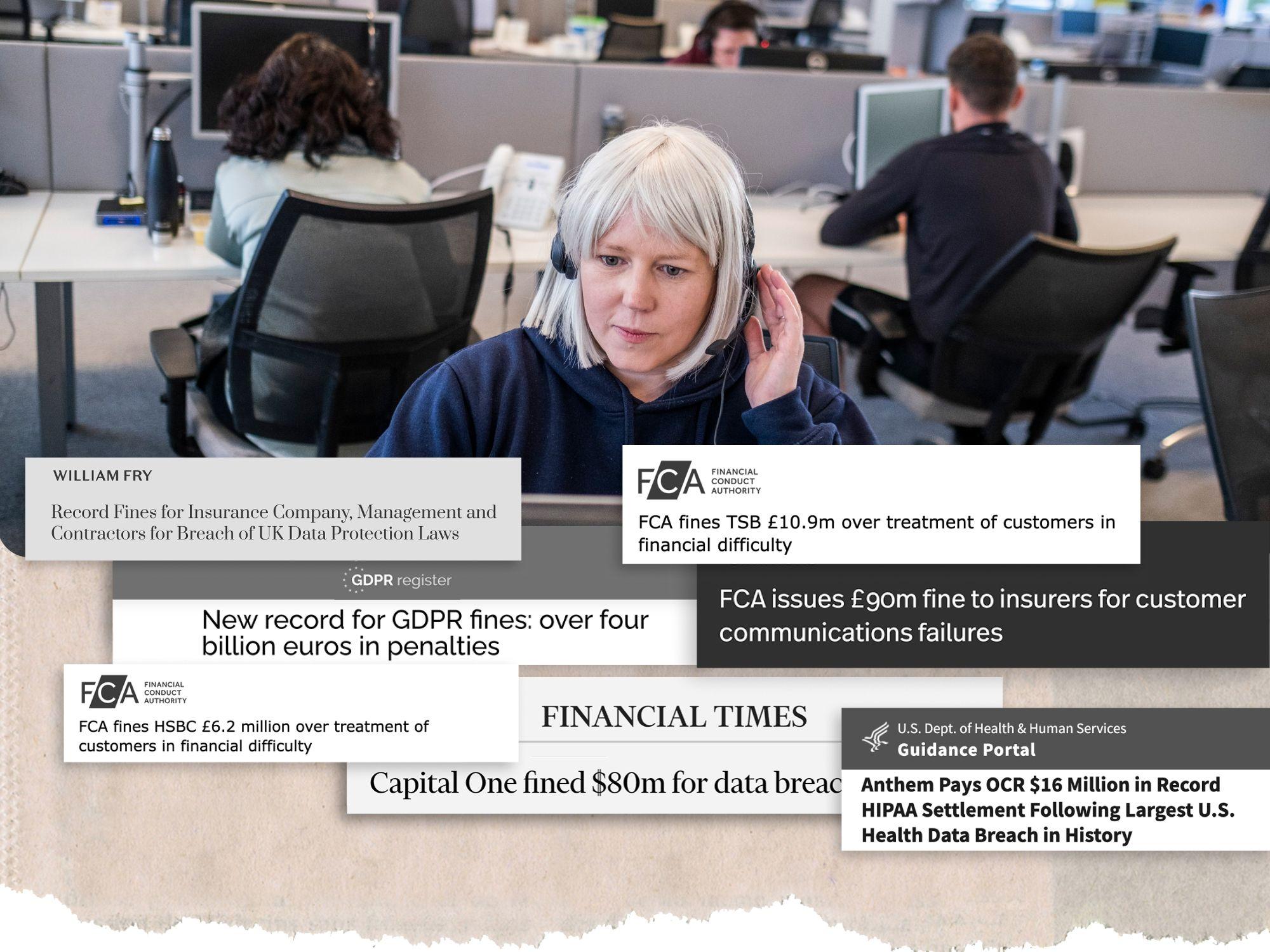
What is Acoustic Shock?
We explain what acoustic shock is, why it happens, the impact on call centre agents, and how noise cancellation apps like IRIS Clarity can help.
Conversational communication remains a vital bridge to customers, but businesses that use call centres face a hidden risk: acoustic shock. The condition results from sudden exposure to loud or high-pitched noises, often through headsets and background noise during calls, leading to a range of symptoms from tinnitus to temporary hearing loss. For business owners, understanding and mitigating this risk is not just about protecting employees and customers—it's also about safeguarding the company from potential legal repercussions.
What You Need To Know:
- Acoustic shock is a condition experienced by individuals exposed to a sudden, unexpected loud sound, typically through devices like headsets or earphones.
- It’s often caused by feedback, loud noises in the work environment, or malfunctions in telecommunication equipment.
- Symptoms include pain, discomfort, ringing in the ears (tinnitus), hearing loss, dizziness, headache, and a sensation of pressure or blockage in the ear.
- Besides physical symptoms, victims may also experience psychological distress, including anxiety, stress, and aversion to sound (phonophobia).
- Treatment focuses on symptom relief and may include hearing assessments, psychological support, and the use of sound protection equipment to prevent future occurrences.
- In environments where employees are exposed to potential acoustic shock risks, such as call centres, there is an increasing emphasis on employer responsibility to address these risks.
The Science Behind Acoustic Shock
Recent research has shed light on the prevalence and impact of acoustic shock, particularly in environments heavily reliant on telephonic communication, such as call centres. The condition is a response to unexpected, intense acoustic stimuli, which can lead to symptoms such as otalgia, altered hearing, and even anxiety or depression in severe cases. Noise cancellation apps such as (IRIS Clarity) use voice isolation can help, if not avoid, such issues.
Sudden exposure to loud noises can lead to temporary or permanent hearing loss. The Journal of Auditory Research highlights the risk of hearing impairment due to acoustic shock, emphasising the need for preventive measures in call centres. On top of this, conditions such as tinnitus (ringing in the ears) and hyperacusis (sensitivity to sound) are often reported following acoustic shock incidents. These conditions can lead to increased discomfort and distraction, further affecting an employee's ability to work.
The suddenness and the intensity of the noise are key contributing factors. Businesses can take measures, like noise cancelling apps; however, the issue is all too often ignored until it is too late.
Three Case Studies
It’s useful to look at case studies to show how businesses must address risks of acoustic shock for both employees and customers:
- A major telecoms brand paid £90,000 to a call centre worker suffering from acoustic shock, with an additional 83 employees pursuing claims. This instance shows the severe implications of acoustic shock in call centres and the critical need for preventive measures and quality audio equipment and software to protect employees.
- Another, more recent, case involved Mr. Storey, a call centre worker who experienced severe pain due to using a faulty headset. What followed were lengthy legal proceedings, emphasising the necessity for accurate evidence and noise cancelling software.
- Another call centre operative claimed in 2022 to have suffered “life-changing acoustic shock when his headset emitted a sudden, intense, high-pitched crackling sound”. A personal injury claim and two hearings followed, causing the call centre company time and money. The situation could easily have been avoided with proper measures, like AI noise cancellation software.
The Risks For Businesses
For businesses, the implications of acoustic shock are twofold. On one hand, there's a legal duty to protect employees from workplace hazards, including acoustic shock. Failure to implement adequate safety measures can lead to legal actions from affected employees. On the other hand, ensuring that customer interactions are free from such disturbances not only enhances the customer experience but also protects them from potential harm, thereby reinforcing their trust in the brand.
Understanding the legal and health implications of acoustic shock is important for companies using call centres. This condition not only poses a significant health risk to employees and customers, but also exposes businesses to potential legal challenges. Here are the main legal and health issues surrounding acoustic shock at work:
- Workplace Safety Obligations: Regulations require businesses to maintain a safe working environment. Non-compliance, particularly in mitigating known hazards such as acoustic shock, can lead to legal repercussions. For instance, workplace safety standards, as outlined in the Control of Noise at Work Regulations, emphasise an employer's responsibility to protect workers from hearing loss due to loud noise exposure.
- Compensation and Litigation: Employees affected by acoustic shock may seek compensation for medical expenses, loss of wages, and other related damages. Legal precedents (as seen above) have shown businesses be held financially liable for failing to prevent such workplace injuries.
- Reputation: Legal disputes (however they rule) over workplace safety negligence can severely damage a company's reputation, affecting customer trust and loyalty. The public nature of such cases can have long-lasting impacts on brand perception.
The Solution
To address these legal and health risks, businesses are turning to advanced solutions like IRIS Clarity (which you can try for free for 7 days). This noise cancellation software is designed to filter out sudden, loud disturbances, providing a safer auditory environment for both employees and customers. By integrating IRIS Clarity, businesses can demonstrate their commitment to safety, potentially reducing their legal liabilities and enhancing the overall communication experience.
A Thorough Approach:
There are two main parties to consider here—employees and customers. With AI noise cancellation, leaders can both protect employees from the potential harm of acoustic shock and ensure that customer communications are clear and uninterrupted. For employees, this means a reduced risk of experiencing the discomfort and health issues associated with acoustic shock, leading to a healthier work environment and improved overall well-being. For customers, it translates to a better service experience, free from the jarring interruptions that can occur in telephonic communications.
Mitigating Risk:
Implementing AI noise cancellation technology like IRIS Clarity is both a preventive measure and an investment in the safety of everyone involved in the headset communication process. By prioritising this issue, businesses can mitigate legal risks, enhance the quality of their customer service, and create a safer, more productive work environment.
How can I reduce background noise in a call centre?
If you’d like to experience noise cancellation across all desktop apps and platforms, from NICE to Genesys, Google Meets and much more - you can find out more about IRIS Clarity here. IRIS Clarity is trained using over tens of thousands of different pieces of audio so that it only allows the primary voice in conversation to be heard — allowing you to take control of your calls.


